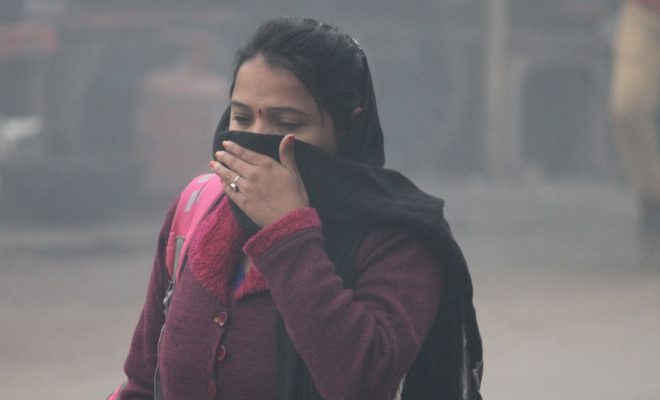Health
Air Pollution Skyrockets to Hazardous Levels in India

Air pollution
IANS
For the second year in a row, India's 31-member Supreme Court banned the sale of most fireworks leading up to the festivities.
Toxic clouds descended upon New Delhi on Thursday, forcing residents indoors and posing significant health concerns. The lethal smog came just hours after celebrations to mark Diwali, the Hindu “festival of the lights.”
Commemorating the triumph of good over evil, the holiday happens every fall – but this year the atmosphere threw a wrench in the plan. The city of over 18 million awoke Thursday morning to a shroud of hazardous haze, spurred by construction activity and vehicle emissions and exacerbated by fireworks detonated the night before.
The air pollution soared to 20 times safe levels.
For the second year in a row, India’s 31-member Supreme Court banned the sale of most fireworks leading up to the festivities. Only “green” fireworks were to be sold, a prohibition that extended to online merchants – including Amazon – as well. The court also set a fixed time, from 8 to 10 p.m., for them to be lit off.
Despite the strict regulations, poor enforcement may have been inevitable in a city so large. Residents continued to ignite fireworks after midnight while donning face masks and coughing up ashen soot. Last year, New Delhi’s chief minister likened the debacle to a “gas chamber,” according to The Guardian.
The Air Quality Index (AQI) is based on the concentrations of five air pollutants: ground-level ozone, carbon monoxide, sulfur dioxide, nitrogen dioxide, and particulate matter. The latter describes fine particles in the air between 2.5 and 10 microns across, roughly 1/28th the diameter of a strand of human hair.
AQI values under 50 are considered good. When they exceed 100, they are considered to be “unhealthy for sensitive groups.” Big concerns come around 150-200. Anything over 300 is deemed “hazardous.” New Delhi’s AQI hit about 1,000 in the early morning hours Thursday, the worst conditions found just south of Safdarjung airport.
A weather balloon launched from the hub at 6:30 p.m. Wednesday night shows a strong inversion present just a thousand feet above the surface. This layer of warm air acted as a “ceiling” to the atmosphere, trapping all pollutants below. The smoke can’t rise, so it becomes pent up. It’s like leaving a vehicle idling with your garage door shut. The consequences can be deadly.
PM can come from natural sources – like dust storms in the Sahara – but is a more common byproduct of vehicle emissions, construction, and “dirty combustion.” Its concentrations proved to be less during the daytime as the inversion lifted and allowed the air to mix out. Other gases – like ozone – feed off sunlight, and reach their highest levels in the early afternoon.
This is the third year consecutive data have been collected to show an alarming spike following Diwali. Pollution levels have historically tripled or quadrupled overnight, making Diwali peak date of the year for pollution.
India is infamous for its pollution, rivaling China as the greatest polluter of greenhouse gases and particulate matter by gross domestic product. A 2015 study warned that nearly half of all New Delhi schoolchildren would develop irreversible lung damage before reaching adulthood.
This latest pollution episode comes ten days after the World Health Organization released a report concluding that 93 percent of children worldwide breathe toxic air daily. The chilling findings link the toxic gases we release to “lower cognitive test outcomes,” compromised “mental and motor development,” and issues with “neurodevelopment” as well.
(c) 2018, The Washington Post

You must be logged in to post a comment Login